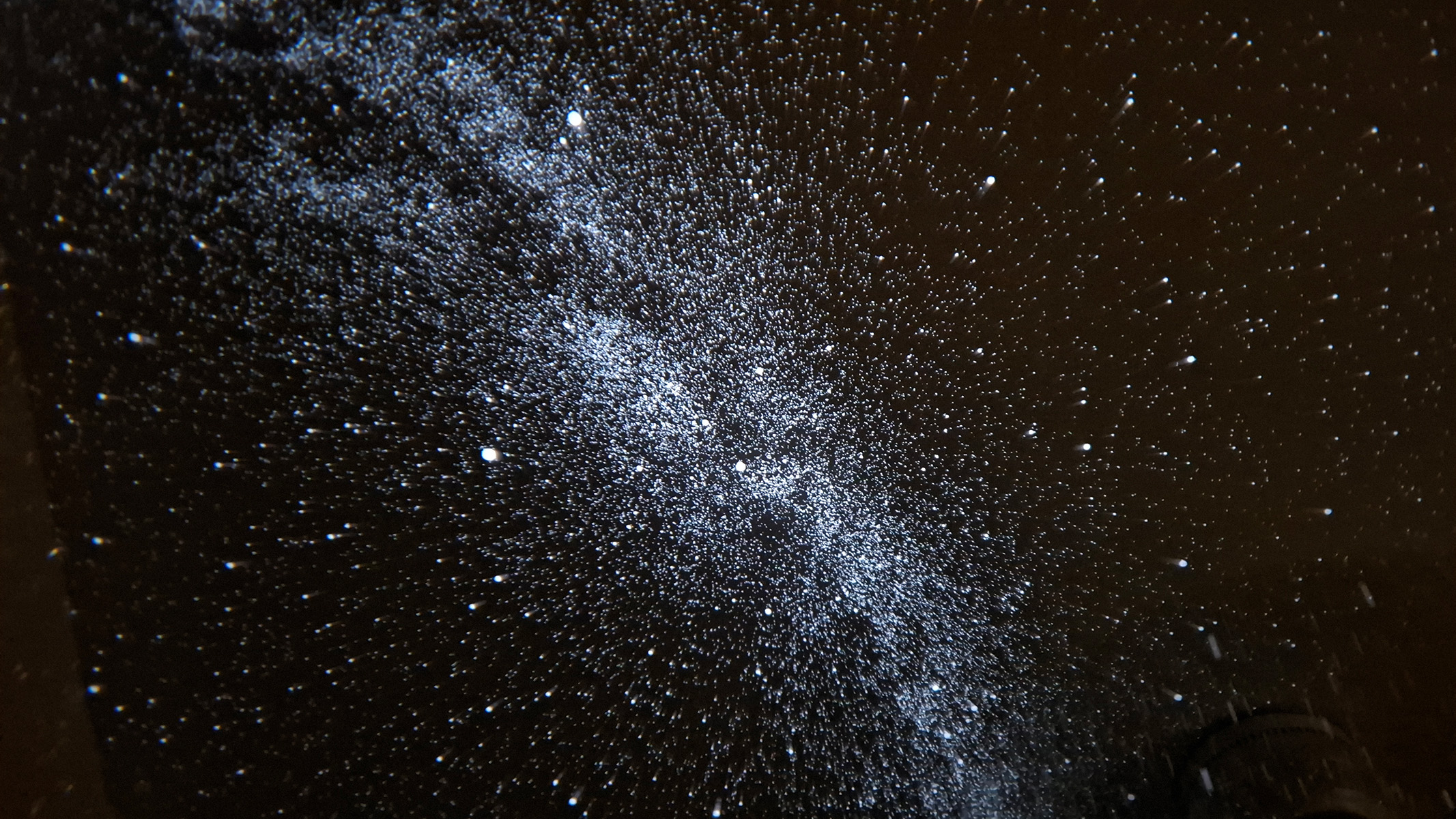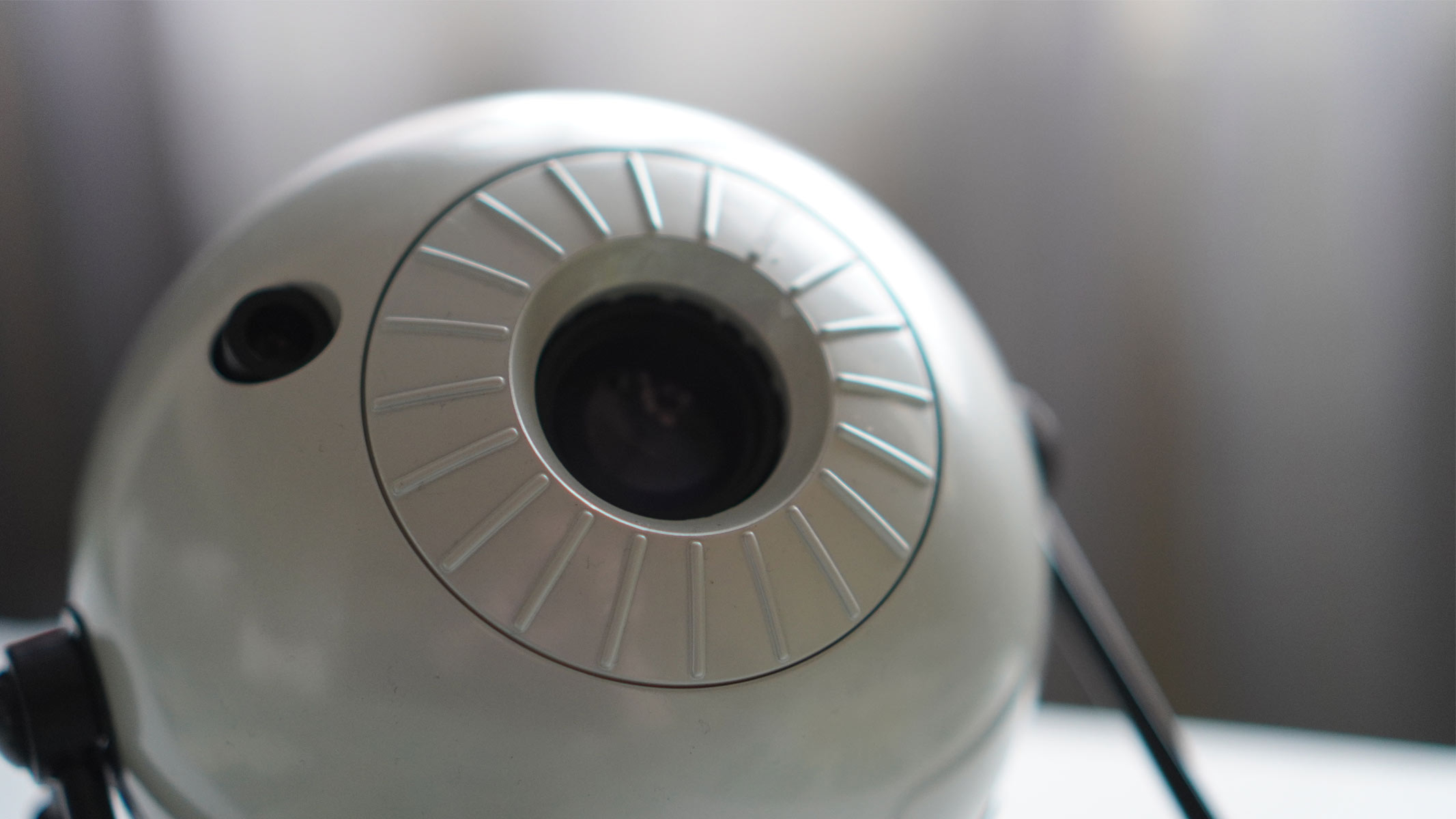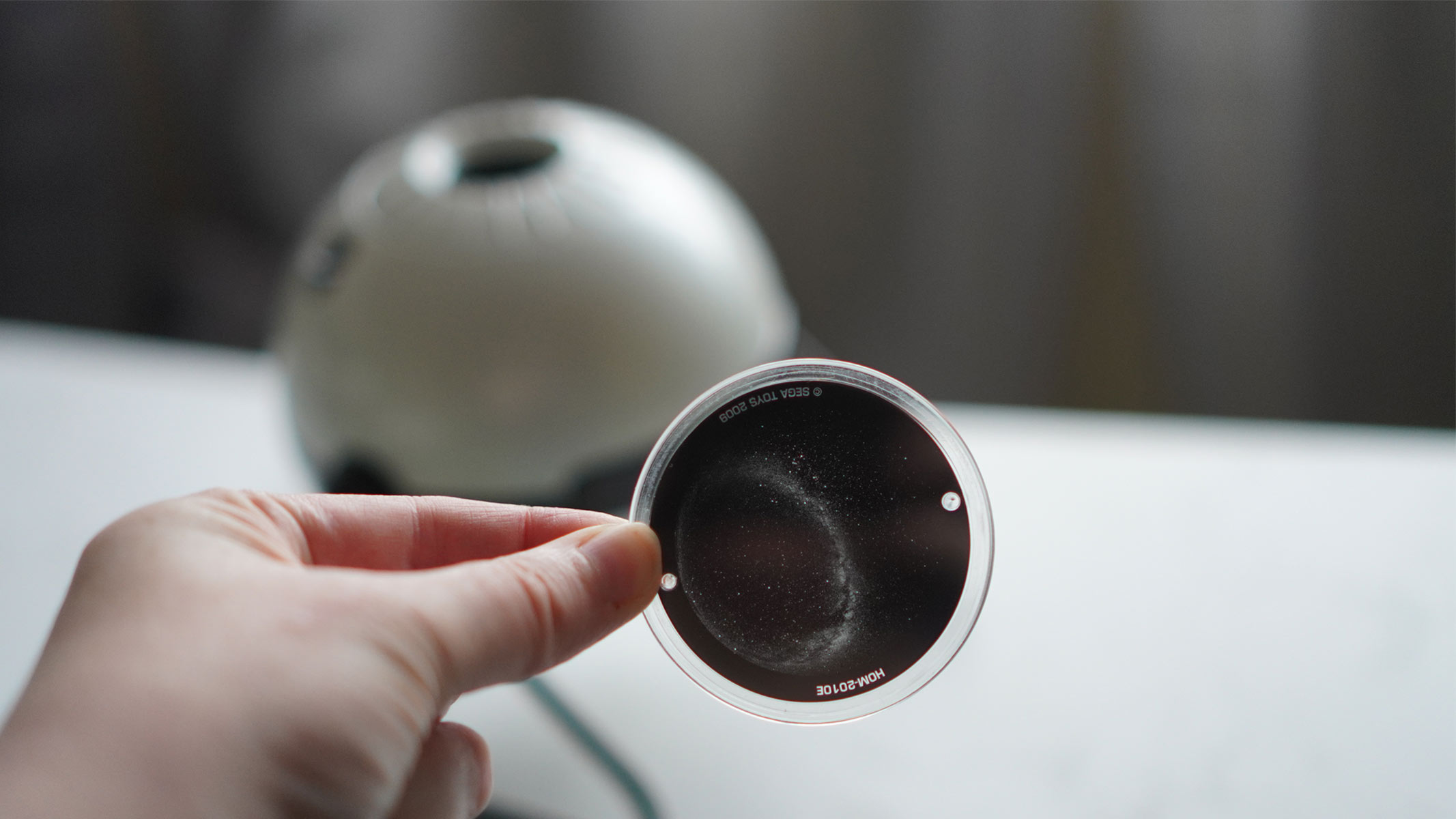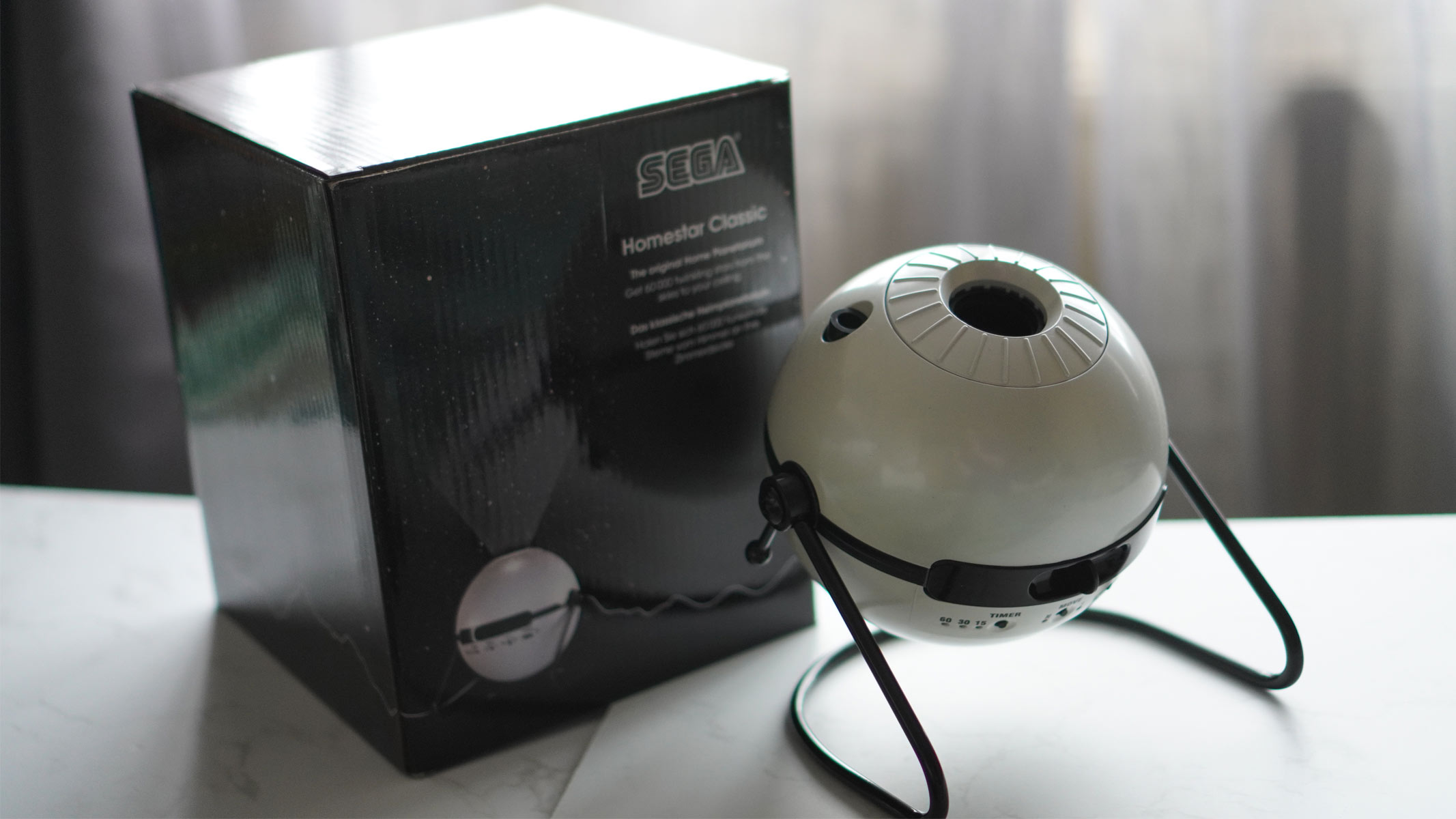Space Verdict
Sega Toys' Homestar Classic is up there with the best star projectors you can buy. It looks great, and its projections are gorgeous, although it is on the more expensive side. If you're looking for a realistic night sky projection, this is as good as it gets.
Pros
- +
Beautiful projections
- +
Lots of discs available
- +
Easy to use (once it's in focus)
Cons
- -
Can take a while to get properly focused
- -
Needs to be fully dark to work properly
Why you can trust Space.com
Size: 6.3 x 6.3 x 5.9 inches
Weight: 1.21 lbs
Bulb Type: 3-watt white LED
Rotation: No
Sleep timer: Yes
Speaker: No
Projection distance: 59 to 90 inches
If you're looking for one of the best star projectors, the same name will keep coming up: Sega Toys. Yes, that Sega. The very same company that brought us Sonic the Hedgehog also has a hand in creating realistic imagery star projectors, and they're amongst the best.
The Sega Toys Homestar has been around since 2006 and quickly established itself as one of the best star projectors around. Almost 20 years later, it's still largely unrivaled — although with projectors like the Orzorz Galaxy Lite and the Pococo Galaxy appearing on the market in recent years, the company has been given more of a run for its money than ever before.
Still, there's something to be said for the Sega Toys Homestar Classic, a repackaged version of the Original, now available in several colors (black, white, blue and red). Now with the unmistakable "SEGA" logo on the box, it looks every bit the quality product that it is. And while it might be amongst the more expensive star projectors on the market, if you're looking for realistic projections, few offer the same level of clarity (and choice) as this.
It takes a little bit of fiddling to get the focus just right, but when you do, it really has that wow factor. If you've been using a super cheap star projector up until now, the Sega Toys Homestar Classic feels like stepping into a new world.

Sega Toys Homestar Classic: Design
- Easy to use
- Looks premium
- Sturdy and easy to adjust
I love how the Sega Toys Homestar Classic looks. Simple and understated, its spherical body manages to somehow look both classic and futuristic. It won't look too obnoxious wherever it's placed in your home, especially if you opt for a black or white version. It is also available in red or blue; both are a little more garish and perhaps more suited to a child's bedroom.
It's very easy to use, at least once you've got the projector focused. Turning it on is a simple case of plugging it into the mains — an AC adapter is included — then toggling the power switch to 'on'. There are only three more settings to choose from: you can turn on shooting stars, enable subtle movement, or select a sleep timer. I'll get onto those settings shortly.
It's a very sturdy-feeling projector, most noticeably when you're trying to adjust its projection angle. Its stand, a single metal loop, doesn't feel flimsy at all, and the projector itself can be angled anywhere between 0 and 90 degrees to face a wall or a ceiling.
Breaking space news, the latest updates on rocket launches, skywatching events and more!

Sega Toys Homestar Classic: Performance
- Almost silent in operation
- Gorgeous projections
- Needs to be fully dark to work properly
You can barely hear the Sega Toys Homestar Classic when it's in use, making it perfect to fall asleep to. Unlike other models, this projector doesn't rotate; rather, it can gently pan the image across the projection area. It means there's no noisy motor whirring away when it's switched on, giving you no reason to be distracted from its gorgeous projections.
Because the projections you'll get out of the Sega Toys Homestar Classic are gorgeous. Sharp, bright and beautiful, it's like looking at the night sky from the most remote part of the world on a clear night. It's stunning. In the box, you'll get two discs: the Northern Hemisphere and the Northern Hemisphere with constellations. It's a shame there isn't a little more variety, although plenty more discs are available to purchase, costing around $20 each.

Perhaps the only slight problem I've encountered with the Sega Toys Homestar Classic is that it can take quite a while to get the focus just right. The focus wheel, found around the projector light itself, can turn and turn and turn, and it's hard to know if you're initially turning in the right direction. Unlike the focus wheel on a camera or binoculars, it feels rather loose and requires a lot of turning before you start to see a difference in the projected image.
It's also very easy to turn the focus wheel too far, with your image going back out of focus. It's important to pay attention and stop at just the right time. Thankfully, once you've found focus, the projector won't lose it. How much you need to turn the focus wheel will depend on how far away your projector is from its projection surface — 59 to 90 inches (150cm to 230cm) is the recommended range.
It's also worth noting that, for the Homestar Classic to work as intended, you'll need your room fully dark. So, wait until after the sun has set, close the drapes and turn off the light. You're in for a serious treat. Even just a dull lamp in the corner of the room can drastically affect the quality of the projections, so bear that in mind.

Sega Toys Homestar Classic: Functionality
- Mains powered
- A variety of stargazing discs are available
- Built-in timer
While the Sega Toys Homestar Classic is a quality star projector, some might think it lacks some bells and whistles. It doesn't come with a remote control, for example, and its rudimentary settings can all be changed on the device itself.
The projector won't rotate, for example, and it has no built-in speaker or Bluetooth connectivity that you might find on some modern projectors. But there's a good reason for this: The Homestar Classic is designed to provide realistic images of the night sky. It isn't gimmicky or designed purely for novelty.
So while some other star projectors might have more features on the face of it, they're unlikely to provide as good images of the night sky as the Homestar Classic. Here, they're phenomenal: clear, crisp and mesmerizing.

One of my favorite functions of the Sega Toys Homestar Classic is the 'shooting star' option. Press the relevant button on the unit, and you'll randomly see shooting stars appear in the projection. It's seriously neat, although a little too random: the first time I put it on, I had shooting stars every few seconds. I turned it on again to show my partner ("look how neat this is!"), and we were waiting minutes without seeing one.
There's also a 'move' option, which gently pans the image across your projected area. It's a very slow, gentle movement rather than a rotation, so some people might find this soothing to fall asleep or relax to.
The only other button you'll find on the unit itself, aside from the power switch, is a timer. You can set a sleep timer for 15, 30 or 60 minutes, at which time the unit will power itself down — perfect for ensuring it doesn't keep running all night if you plan to use it before bed.
Should I buy the Sega Toys Homestar Classic?
You might wonder why on Earth you should consider spending $150 on a star projector when there are some costing only a fraction of that price. Heck, we've included some in our best star projectors guide that can be picked up for as little as $30.
But you need to consider exactly what you want. Do you want a pretty and colorful light show that might help you relax, but bears no resemblance to the actual night sky? Or do you want a realistic representation of the night sky — one that can even go as far as to tell you what every constellation is, and where it can be found? The Sega Toys Homestar Classic is much more than just a light show, and after just one look at the gorgeous images it projects on your walls and ceilings, it will convince you it's worth every penny.
For even more realism, there's the Sega Toys Homestar Flux, which boasts brighter lights, greater focus distances and advanced optics — but of course, that carries an even greater price tag.
Cheaper, realistic projections can be found in the Orzorz Galaxy Lite or the Pococo Galaxy, which also uses interchangeable discs. But if you have the budget, I wholeheartedly recommend purchasing the Sega Toys Homestar Classic: This is a seriously good projector, and one I can see myself using for years to come.

Kim is a Yorkshire-based freelance writer who focuses on Lego and video game-related content. She's the co-creator of GameSpew.com and ThatBrickSite.com, where you'll find most of her work. If she's not building with plastic bricks, playing a video game, or writing about doing either of those things, you should probably check she's still breathing. You can find her on Twitter at @ichangedmyname.
You must confirm your public display name before commenting
Please logout and then login again, you will then be prompted to enter your display name.

